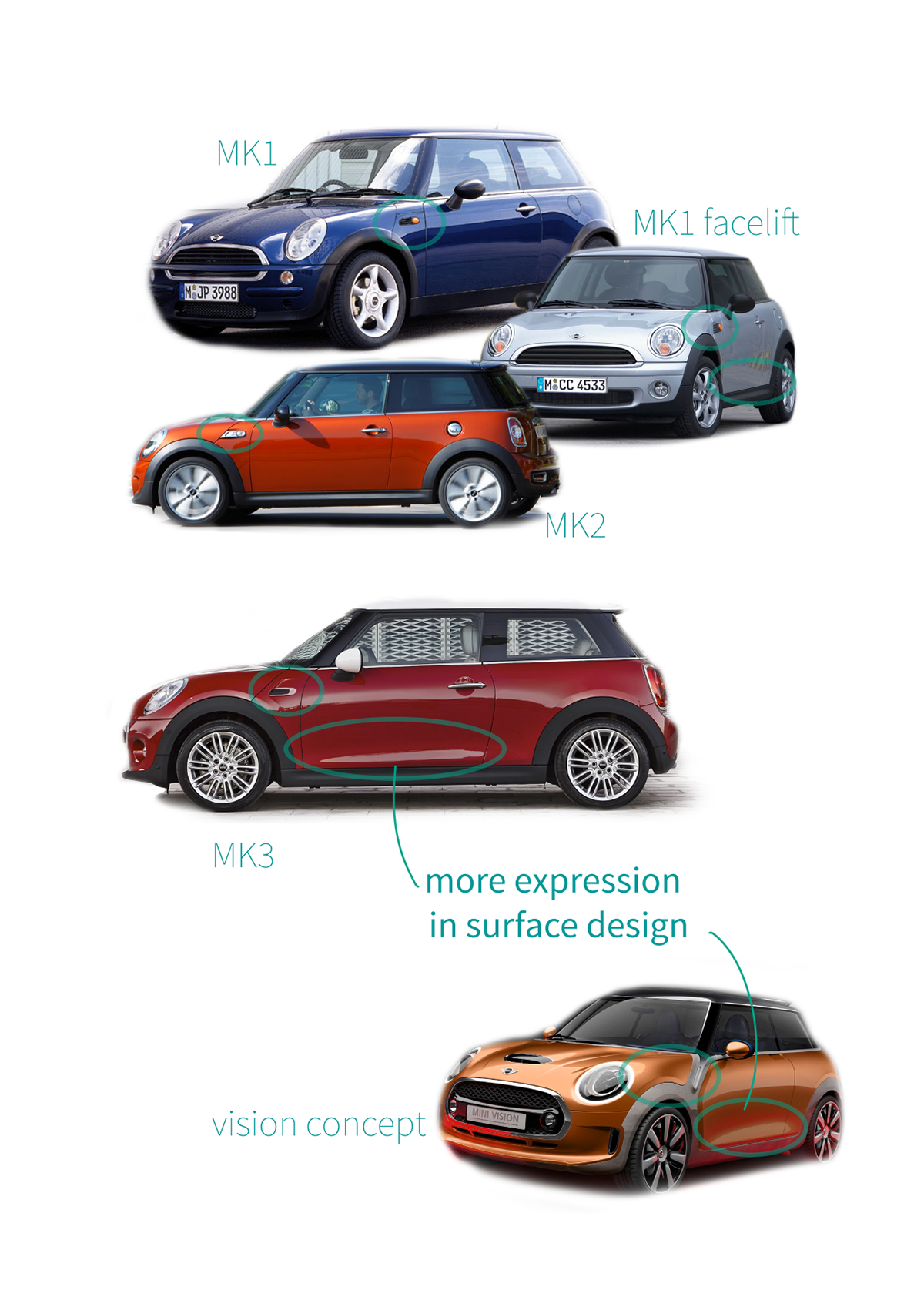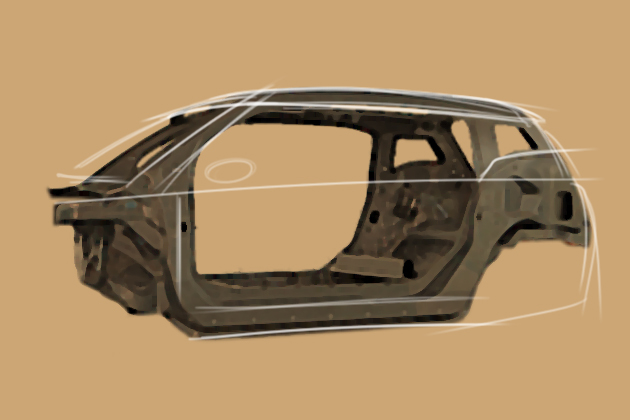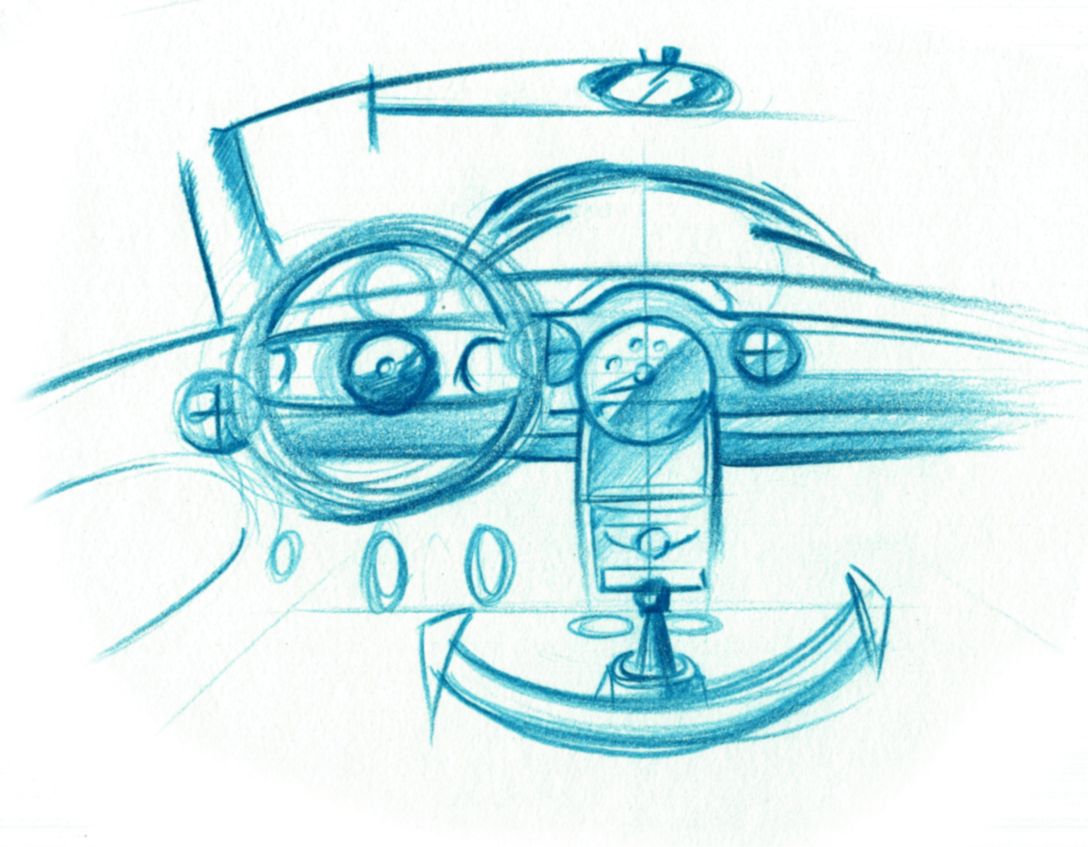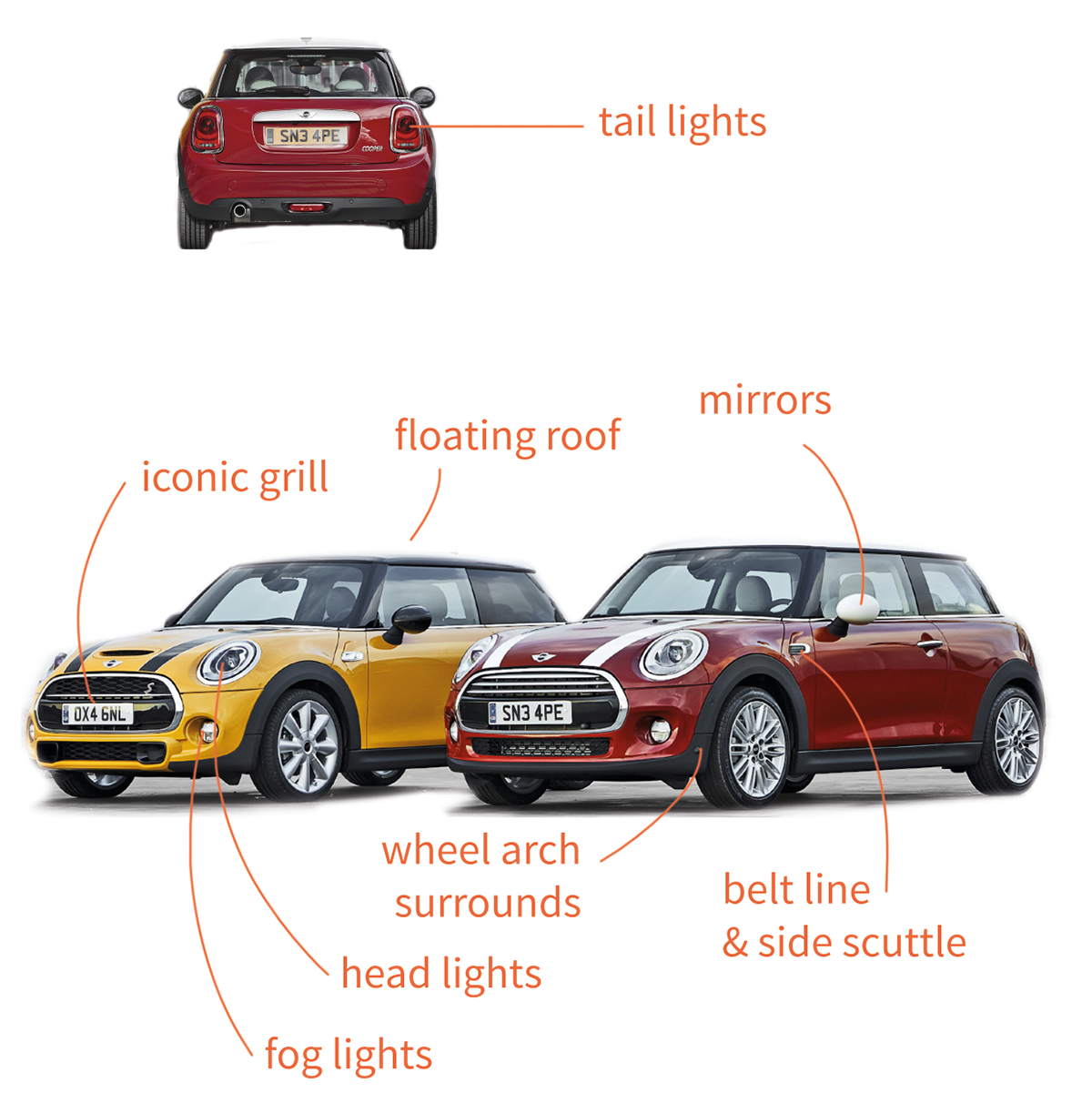The aim of this study is to formulate a strategic advise for MINI, using the Automotive Form Hierarchy theory as developed by Elmer van Grondelle (Delft University of Technology) to give design within the automotive industry a new discourse to talk about form.
Mini, being part of the BMW Group, has been revived in 1997, when BMW bought it. Since then, its retro design conquered peoples hearts and the brand has been successfull ever since.
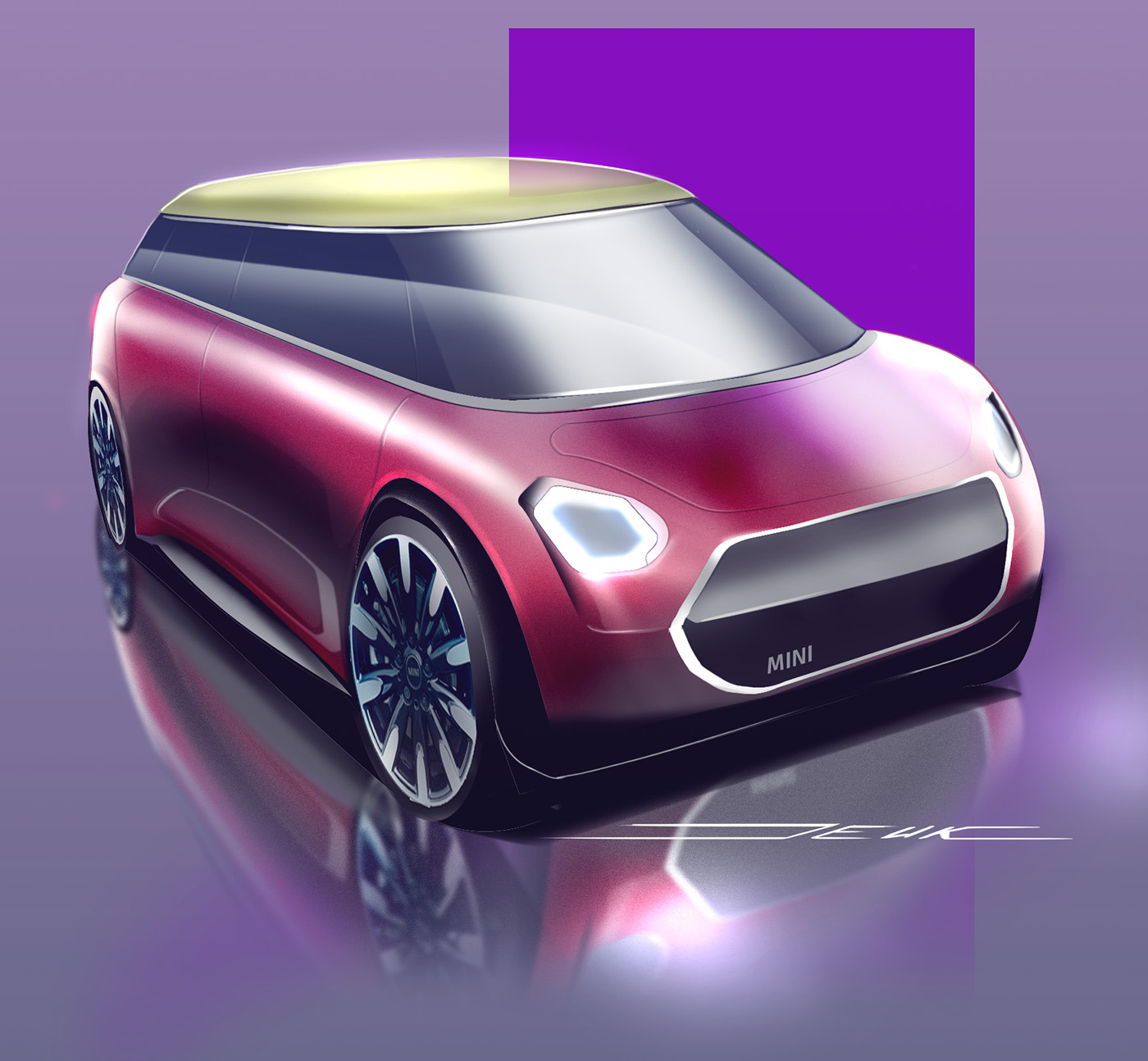
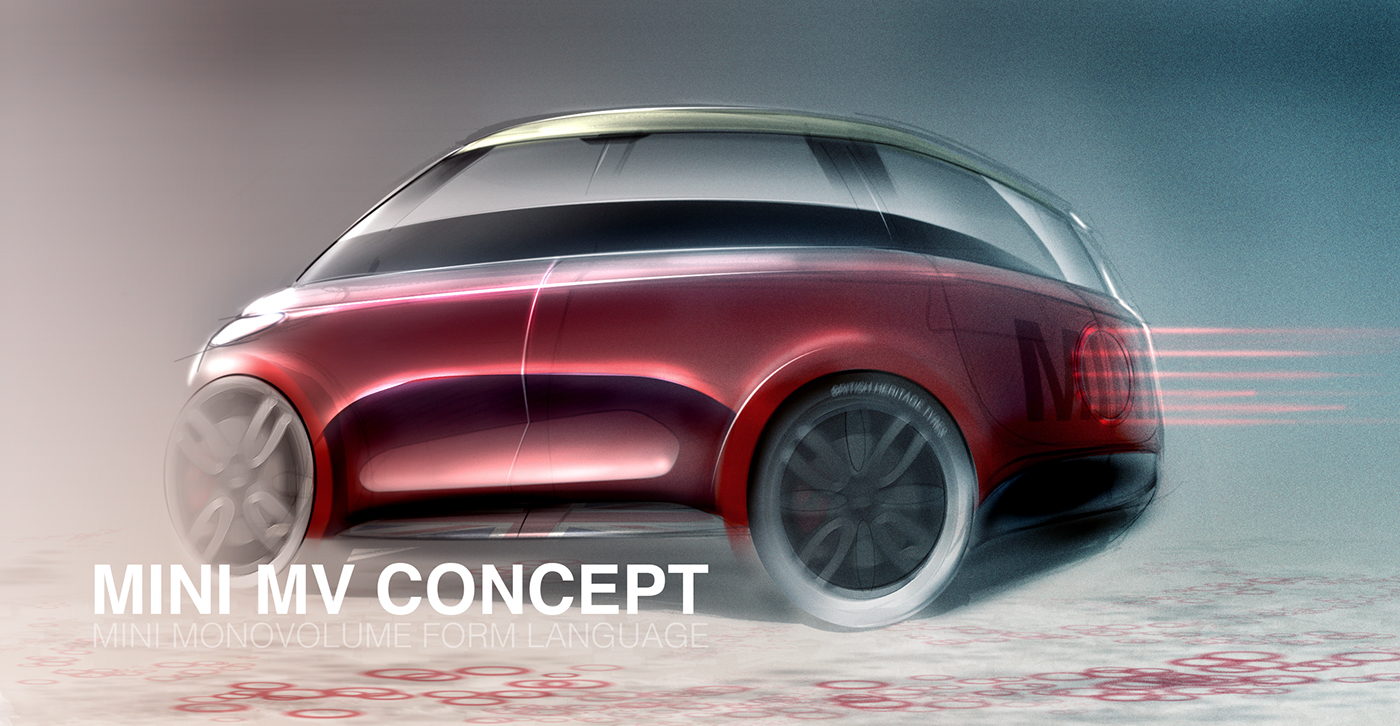
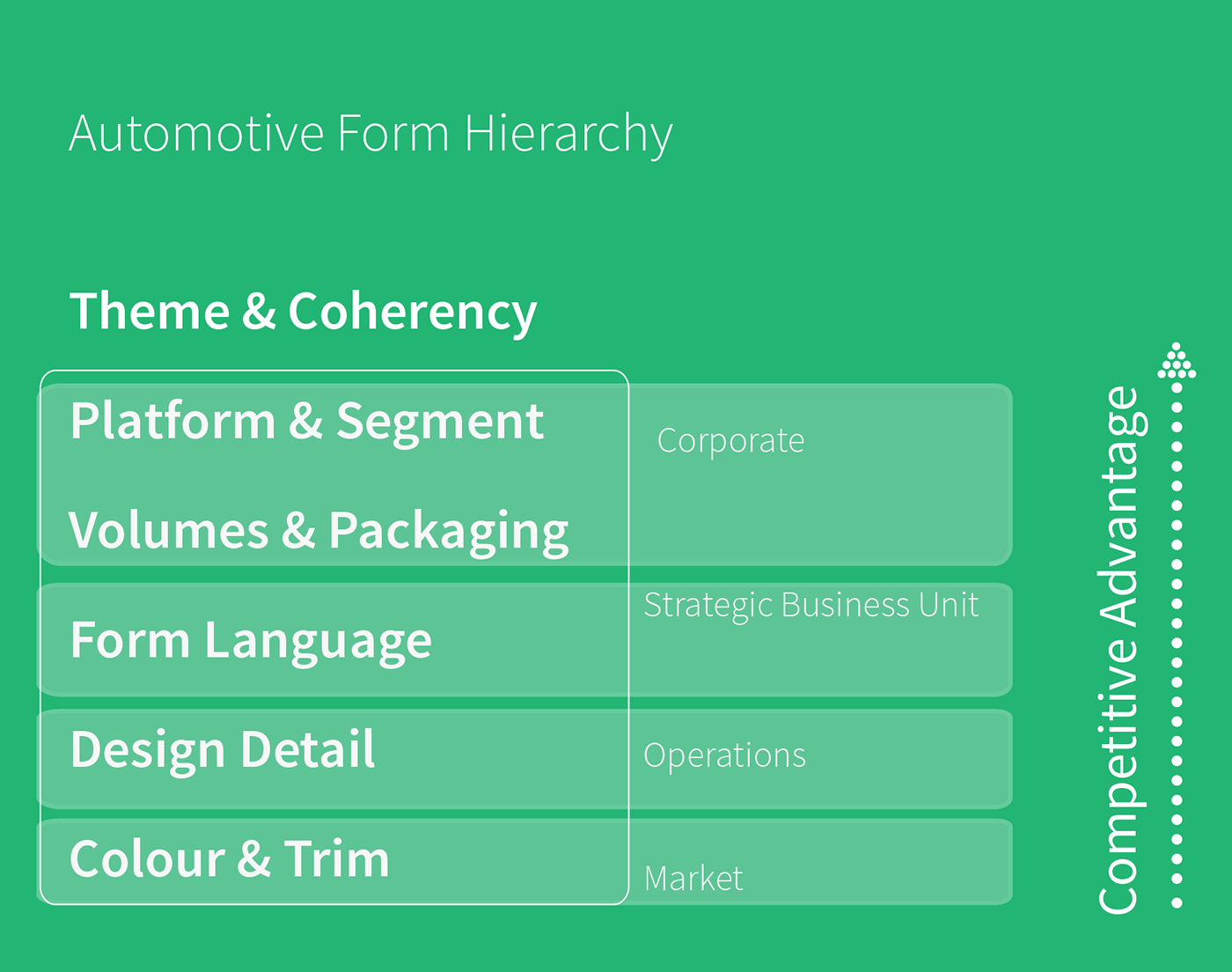

Analysing the Automotive Form Hierarchy within the BMW Group has shown overlap. Recent press announcements told us that the new MINI will share its platform with the BMW 2GT; the UKL Platform (Unterklasse Platform).
By doing so BMW Group/MINI oversees the possibility of making use of the synergy within the other units of the company. By expanding the MINI brand, a trend that is already on for a while with the introduction of the bigger "not mini MINI-like" cars, there is space left in the porftfolio for a clever car within the MINI product line.
MINI, having its origins in clever solutions and relatively small sized cars, could enter the market where it all began by building a car on the innovative BMW i3 platform.
Already during the "design shootout", during the start of MINI's revival, the origninal Rover design team had ideas to build a monovolume car, whereas the BMW design team went after a retro look and won the internal competition.
The British design team's design caused a inconsistency for the brand; the innovative character of their design was something that was not clear enough for the intended user: they created gap with the old brand values and especially its form.
The MINI MV concept revives this idea and studies the possibilities of a monovolume within MINI's product line.
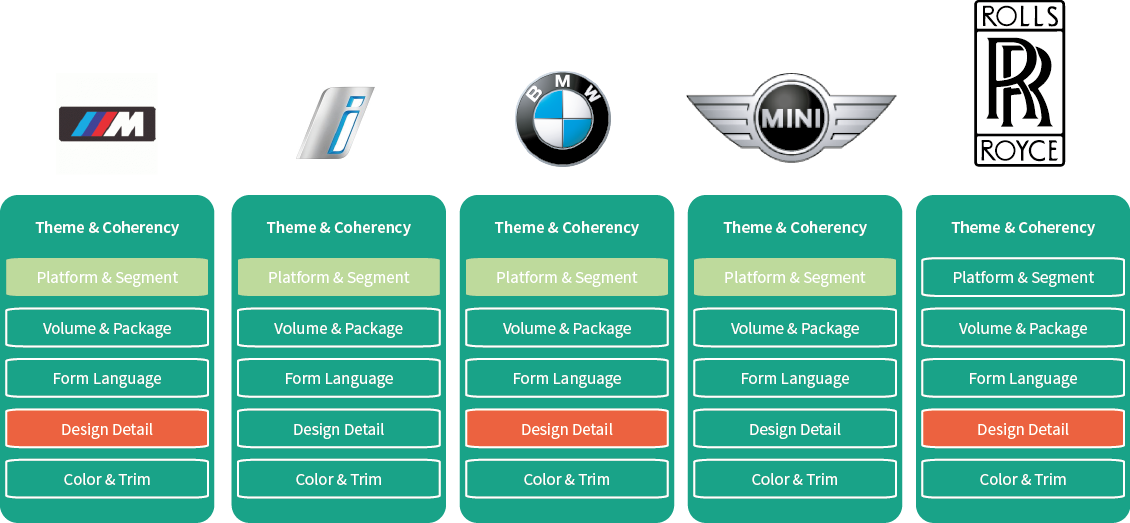
What makes a MINI a MINI? Taking this question as a starting point, people where asked to identify the car brand by showing layers in Autodesk Alias, resulting in this outcome. The length of the bonnet was not a significant factor, although shown in this outcome.
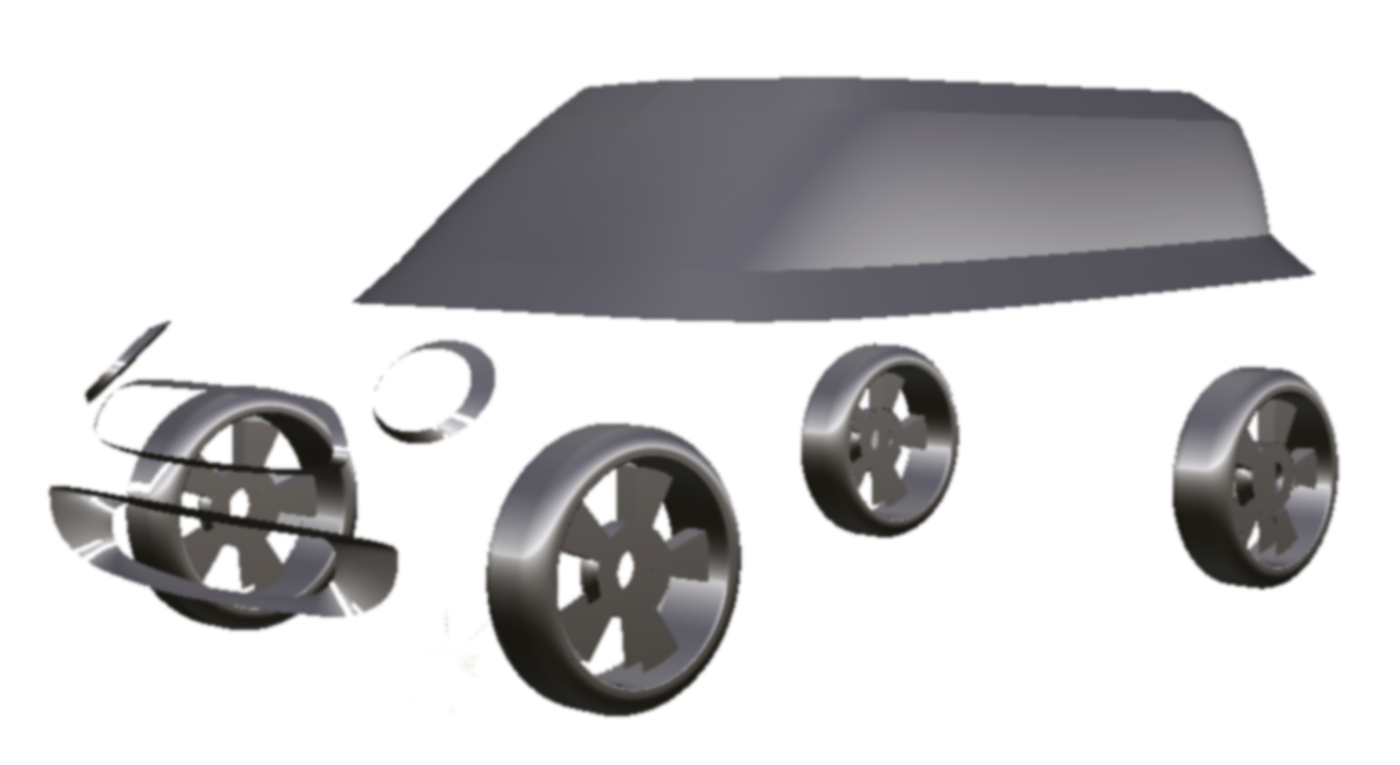
What is the brand like at the moment? Mini stands for relatively "small", premium cars that pretend to drive like a go kart. While expanding the brand at the moment with SUV-like cars, as the Paceman and Countryman, the MINI gets bigger and away from its roots.
Seeing the opportunities in expanding the brand the cars (or other means of transportation) could be given other reasons of being and keep the level of personalization. Just to study the amount of things you can change and personalize, the MINI was drawn in grey and the outcome was that on the "color & trim" level, the MINI was outstanding. But is it really diffentiating from its competition? For example, the Fiat 500 is really outspoken on this level as well.


Whereas the Fiat 500 is a real competitor in terms of personalization, the MINI has a lot of other competitors when looking at starting prices. Taking into account that its competition offers "more car" to the customer, only dedicated car-lovers will buy the MINI. Or is it?

It seems the MINI has the "X-factor" and does not suffer that much from new competition, seeing the new generation that enters the market and spends more on electronic gadgets than on a car. They simply want transport instead of a "bulky piece of metal that is useless for 95% of the time".

